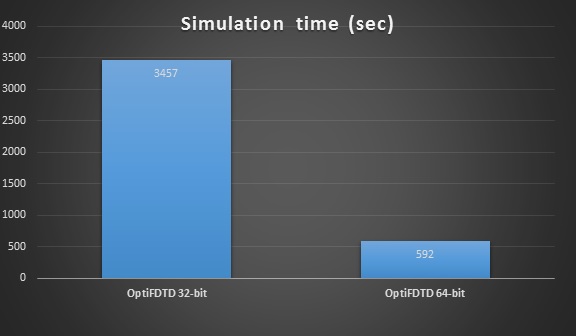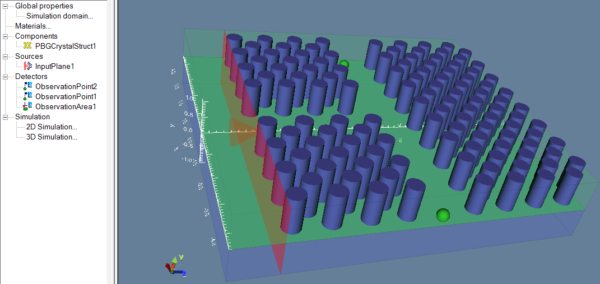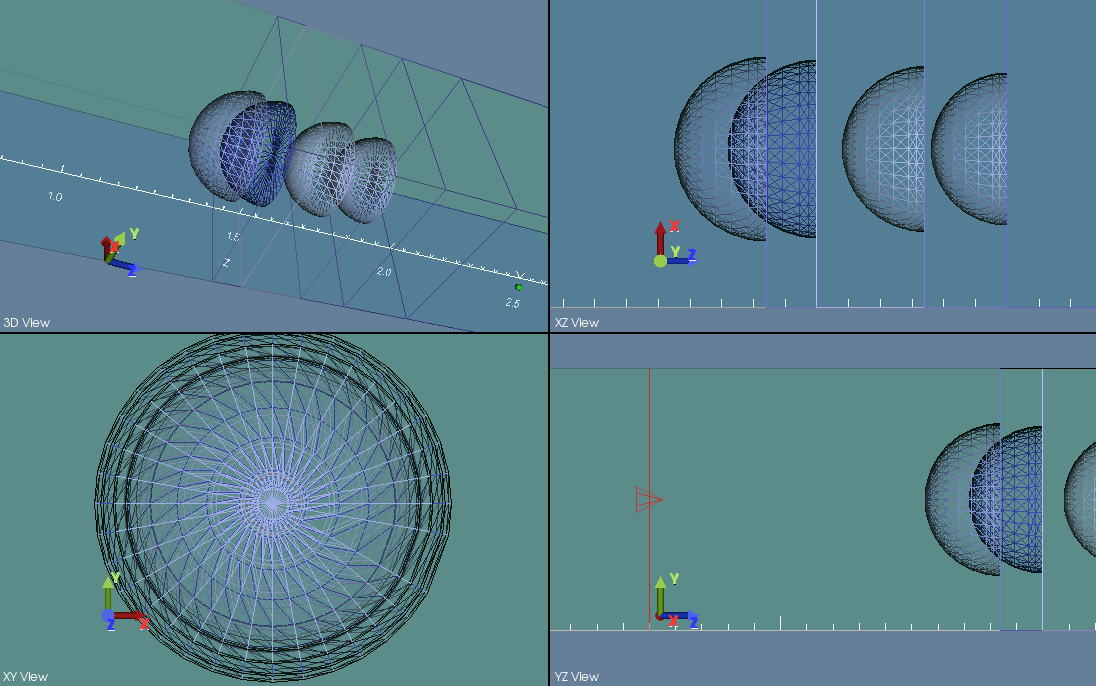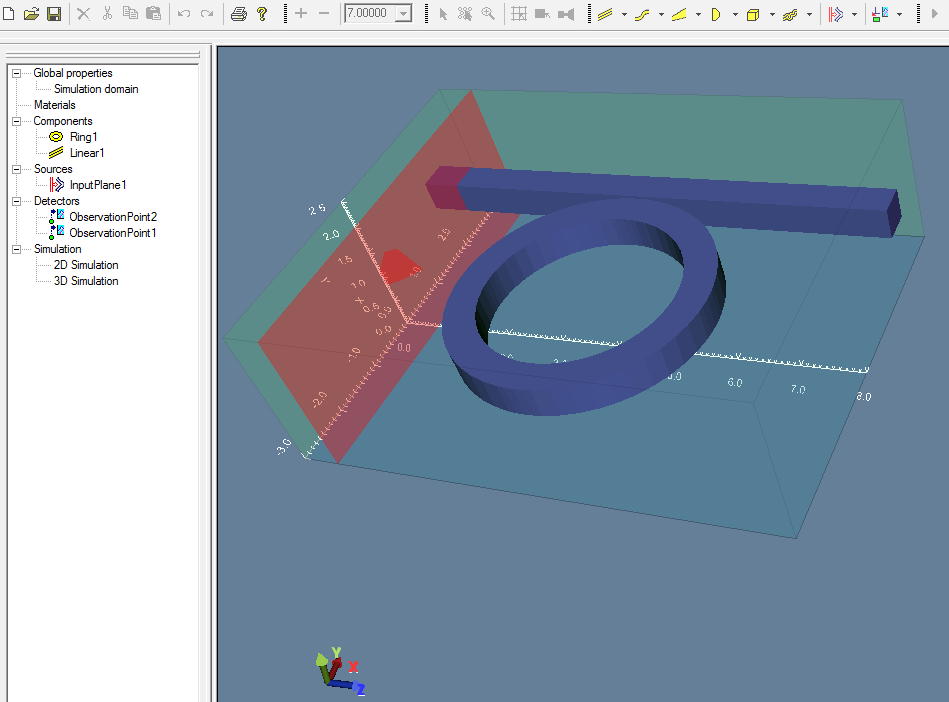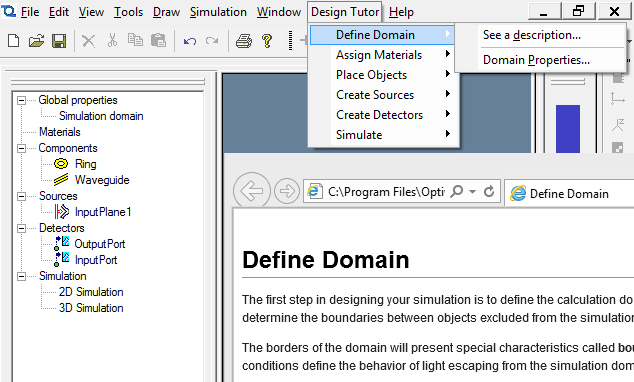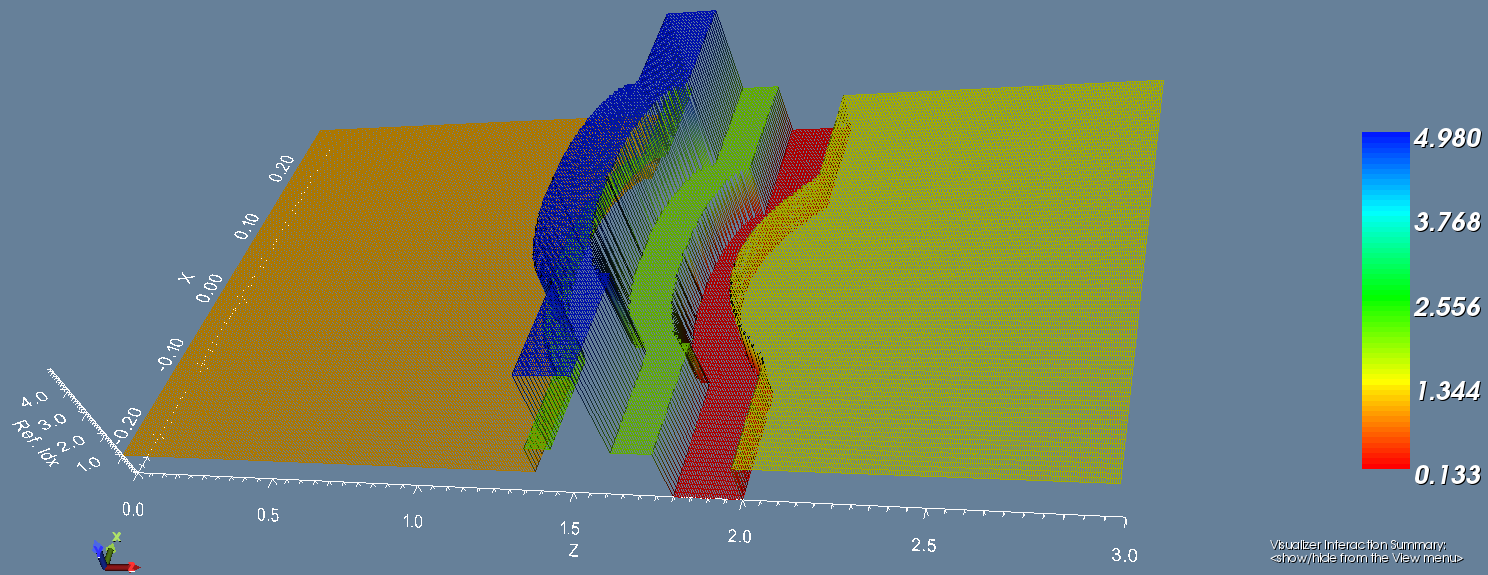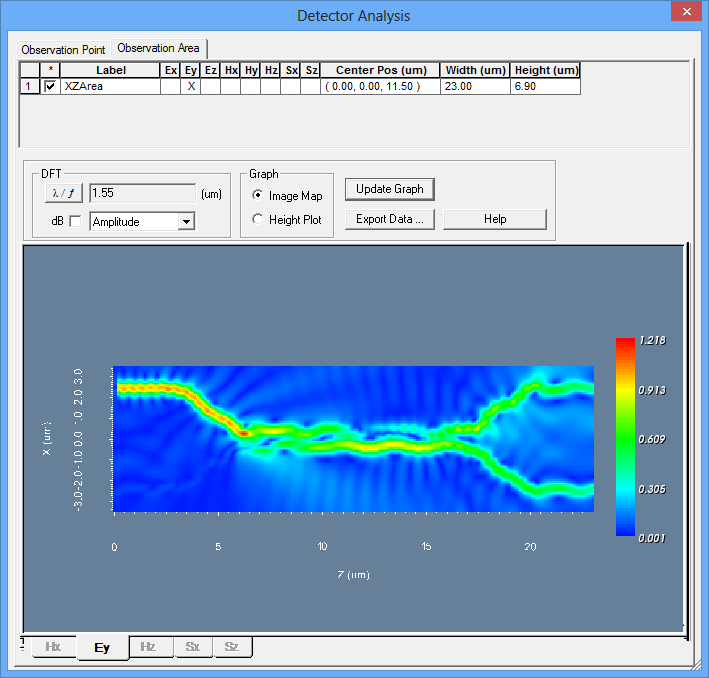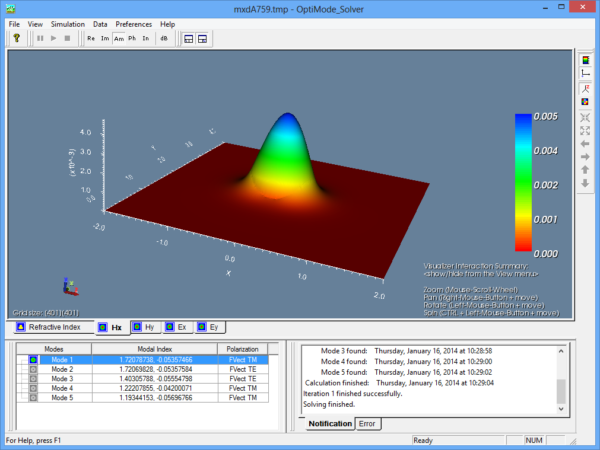OptiFDTD 64-bit has been thoroughly re-engineered to take full advantage of recent processor and memory evolution. Every aspect utilizes 64-bit processing technology for optimal performance.
OptiFDTD 64-bit Linux simulator can be easily deployed on any Linux cluster to further reduce simulation time and extend usable memory. 64-bit FDTD provides a more consistent user experience and increases productivity when designing, simulating and analyzing complex models.
Fig. 1: 3D FDTD simulation of a ring resonator with approximately 1 million FDTD cells and 10,000 time steps
(computer: i7 2700 @ 3.4 GHz).
The differences between the new 32 & 64-bit versions are charted below:
Fig. 2: Differences in 32 & 64-bit versions of OptiFDTD 12
64-bit 3D Editor
The new editor improves the design experience by enabling users to visualize and directly edit design objects in three dimensions. Simple mouse operations enable zooming, panning and tumbling within the simulation domain.
Fig. 3: The new 3D editor displaying a “T-branch” photonic crystal layout
For more precise positioning and better visualization of hidden geometry, the 3D editor can be replaced by a 4-quadrant window showing three orthographic views (XY, XZ, YZ) and a 3D representation of the layout. The Wireframe Mode can be activated to visualize intersecting objects more precisely.
Fig. 4: 4-quadrants editor showing an optimized plasmonic solar-cell design
64-bit Project Browser
The new project browser enhances productivity by categorizing all components (geometry, input sources, and detectors) into a single window that can be quickly and easily accessed.
Fig. 5: Project Browser showing components of a ring resonator
64-bit Design Tutor
Ideal for beginners, the Design Tutor presents a step-by-step workflow for preparing, designing and simulating photonic components. Each step is explained in detail in the offline help, which is now accessible via the Help menu. This menu also acts as a shortcut for information about common software functions.
Fig. 6: Design Tutor
64-bit Matrix and Mesh Converter
Two new tools were added to the OptiFDTD Toolbox: Matrix Converter and Mesh Converter. The Matrix Converter converts field data to a format compatible with external software tools (such as Matlab and Origin). The mesh converter converts an OptiBPM output field to an OptiFDTD input field.
64-bit 3D Refractive Index Viewer
The new 3D refractive index and optical field viewers provide users with a more detailed and real-time view of the data. Non-uniform FDTD meshes can also be visualized.
Fig. 7: Refractive index viewer showing a slice of an optimized plasmonic solar-cell
64-bit Analyzer
The analyzer’s graphical user interface has been enhanced with the introduction of a Project Browser and 3D Editor to provide a better user experience. An improved detector analysis window also gives users a more detailed visualization of the simulation data.
Fig. 8: Observation Area DFT analysis of a 2D TE coupler/splitter
64-bit OptiMode Improvements
OptiMode’s Transparent Boundary Conditions (TBC) can now be used in the Finite Difference (FD) mode solver. The accuracy of the mode solver solutions is important for leaky waveguides and structures with high-index contrast. The solver’s graphical user interface has been re- designed to include enhanced visualization graphs along with tools for easier interaction.


